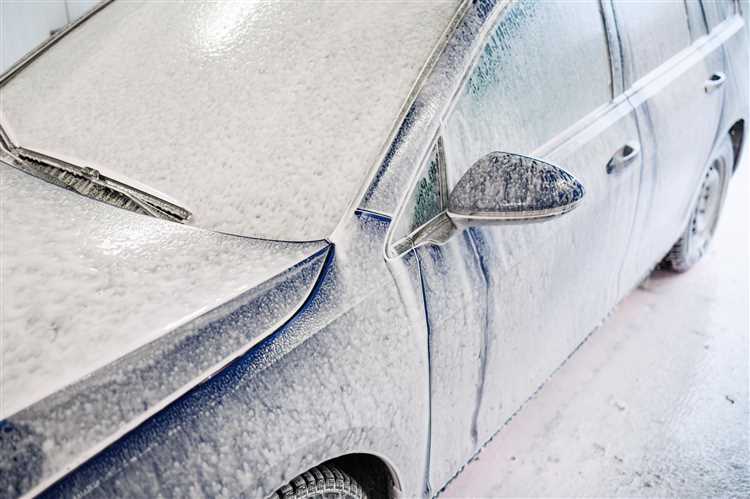
As winter approaches, it’s essential to prep your vehicle to withstand the harsh elements that come with the season. Snow and ice can be taxing on your car’s exterior, but the real culprit for potential damage is road salt. This corrosive substance, commonly used to melt ice on roads, can lead to significant deterioration of your car’s paint if not properly managed.
Understanding how winter can affect your car’s paint is crucial. The combination of freezing temperatures, moisture, and the salt used for de-icing can create the perfect storm for paint damage. If left unattended, the protective coating of your vehicle can become compromised, leading to rust and other aesthetic issues. Taking preventative measures can save you time and money in the long run.
In this article, we will explore effective strategies to shield your car’s paint from winter damage. From maintenance tips to protective coatings, these recommendations will help ensure that your vehicle remains in prime condition throughout the snowy season. Stay ahead of the weather and keep your car looking its best with these practical tips!
Understand the Impact of Road Salt on Your Car’s Finish

During winter months, road salt is commonly used to melt ice and provide traction on slippery surfaces. However, this salt can be highly corrosive and poses a significant threat to your car’s paint finish. When salt comes into contact with the surface of your vehicle, it begins to break down the protective layers, leading to damage over time.
The primary way salt affects your car’s finish is through a process called corrosion. When saltwater accumulates on the paint and is not washed off promptly, it can create small cracks and blemishes. This allows moisture to penetrate the underlying layers, resulting in rust formation. Rust not only compromises the aesthetic appeal of your vehicle but can also weaken its structural integrity.
In addition to direct corrosion, road salt can also lead to the deterioration of protective coatings, such as wax or sealants applied to your car’s surface. These coatings serve as barriers against environmental contaminants, but salt can erode them, leaving the paint vulnerable to scratches, UV rays, and other forms of damage.
To mitigate the impact of road salt, regular cleaning is essential. Frequent washes during winter can remove salt buildup, particularly in areas prone to accumulation, such as wheel wells and undercarriages. Applying a high-quality wax or sealant before winter can further protect your paint from the harmful effects of salt exposure.
Best Winter Preparations for Preserving Your Car’s Exterior

As winter approaches, prepping your vehicle for harsh conditions is essential to minimize paint damage. Begin by thoroughly washing your car to remove dirt, salt, and grime that can contribute to corrosion. Pay special attention to the undercarriage, where road debris tends to accumulate.
After cleaning, apply a high-quality wax or sealant. This protective layer not only enhances shine but also serves as a barrier against moisture and salt, which can lead to winter damage. Choose a product designed for winter conditions to maximize its effectiveness.
Invest in a car cover for added protection, especially if you park outdoors. A breathable cover will shield your vehicle from snow, ice, and tree sap while preventing moisture buildup that can harm the paint.
Inspect your car’s exterior for any existing scratches or chips before winter sets in. Addressing these issues with touch-up paint reduces the risk of water infiltration that can lead to rust formation during the winter months.
Consider applying a ceramic coating for long-lasting protection. This advanced solution offers superior durability and resistance to elements compared to conventional wax, ensuring your vehicle remains pristine throughout winter.
Lastly, consider parking in a garage whenever possible. Keeping your car sheltered from harsh weather will significantly decrease the likelihood of damage, allowing your vehicle to maintain its appearance all winter long.
Top Coating Options to Shield Your Car Paint During Winter
Winter poses significant challenges for vehicle owners, particularly due to harsh weather conditions and the use of road salt. Applying the right protective coatings can help safeguard your car’s paint from damage during this season.
One of the most effective options is a high-quality wax. Waxes create a barrier that repels moisture and salt, preventing corrosive elements from adhering to the paint surface. A fresh coat of wax ensures a smooth finish, enhancing the water-beading effect that protects the underlying material.
Sealants are another great choice. Unlike traditional wax, sealants offer a longer-lasting protective layer, often formulated with synthetic ingredients. This option provides durability against road salts and ensures your car remains shielded throughout the winter months.
For those seeking maximum protection, ceramic coatings are highly recommended. These advanced solutions bond with the car’s paint to form a tough, hydrophobic layer, offering exceptional resistance against scratches, salt, and chemicals. Although more expensive, a ceramic coating can last for several years, significantly reducing the need for frequent reapplications.
Additionally, considering paint protection films can be beneficial. These transparent, urethane-based films are applied directly to the car’s surface and can effectively absorb impacts from road debris and prevent salt damage. The film is durable and can be easily removed without harming the underlying paint.
Ultimately, the choice of coating depends on your specific needs and budget. Regardless of the option selected, applying an appropriate protective layer is essential to maintain your car’s appearance and longevity throughout winter.






